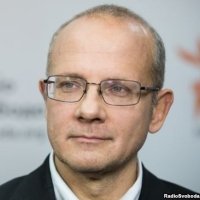Kennan Cable No. 34: Revisiting Decentralization After Maidan: Achievements and Challenges of Ukraine’s Local Governance Reform


Photo Caption: Workshop in Odesa on volunteer fire brigades (Source: https://decentralization.gov.ua/en)
Four years after Russia annexed Crimea and Russia-backed separatists revolted against the Ukrainian government, new clashes in that prolonged conflict have caused a spike in casualties. While Ukraine continues to counter the military challenge in the east, Kyiv has simultaneously undertaken unprecedented attempts at reform. As Ukraine nears its 2019 presidential election, hot topics include a possible future UN peacekeeping mission in the Donbas, massive reforms to the country’s public healthcare system, resetting the electoral system, and countering oligarchic power by ending parliamentarian immunity or creating a specialized anti-corruption court. Less discussed yet equally important for the future of Ukraine is the issue of establishing and codifying the proper balance between central and subnational governance. This means both the decentralization of certain powers from the national government and the amalgamation of small communities into larger, more easily administered units. Ukraine’s steps towards “right-sizing” the state and codifying the balance of local, regional, and national powers through constitutional reform would also contribute toward resolving its most pressing security challenges.
Ukraine’s Success with Decentralization
Despite the war in the Donets Basin (Donbas) and the severe economic downturn that has accompanied it, Ukraine’s central government has not recentralized the country’s finances. Subnational governments continue to receive about 40 percent of public revenue. This underappreciated fact has been the case since the 1990s and makes Ukraine—at least on paper—one of the most decentralized countries in Europe. Countries at war and in economic distress typically centralize public finances. The opposite has happened in Ukraine: the share of total public revenue going to subnational government has increased from about 38 percent in 2014 to about 41 percent in 2017, even though total public revenue has declined because of the deep recession triggered by Russia’s annexation of Crimea and war in the Donbas. In short, the national government has remained impressively committed to decentralization despite considerable pressure to recentralize public finances.
This commitment is commendable because Ukraine’s success in comprehensive local governance reform is essential for creating accountable and transparent public administration. It also plays a key role in bolstering national security. Russia exploited Ukraine’s regional diversity and considerable subnational dissatisfaction with its new government in Kyiv in 2014 when provoking, supplying, supporting, and leading armed separatism on Crimea and in the Donbas. Russia’s success in these regions underscored the importance of better organized national-subnational relations in Ukraine going forward.
Accordingly, many Ukrainian politicians see decentralization as a bulwark against Russia’s hybrid warfare in Ukraine. As, for instance, Andriy Parubiy, the speaker of the national parliament, Verkhovna Rada (Supreme Council), argued during the 2nd All-Ukrainian Forum of United Territorial Communities in Kyiv in December 2017, “the path of decentralization was an asymmetrical response to the aggressor [i.e. Russia]. In fact, the process of capable communities formation was a kind of sewing of the Ukrainian space.”[1] The country’s fate depends on whether it can consolidate the national state while restructuring the composition, responsibilities, and finances of regional and local governments.
Stitching Communities Together
Ukraine’s governance-balancing reforms at the local level over the last three years have centered on combining smaller communities (singular: hromada, plural: hromady) into larger “united territorial communities,” or UTCs (Ukrainian: ob’’ednani terytorial’ni hromady). The logic behind Ukraine’s efforts in consolidating small hromady into larger self-governing entities is that many of the old communities—with an average population of about 1,500—were (or still are) too small to organize, finance, and/or deliver public services to their residents efficiently.
Beginning in 2015, the process of government-encouraged amalgamation of small communities into larger organizational entities started. Kyiv has facilitated this voluntary process by giving UTCs a significant share of national tax revenue, as well as delegating new governance and administrative functions to them, including greater control of local land use planning and permitting, local fees, and local school administration. The national government has also stimulated the UTCs by providing them with significant new investment grants and giving them access to the State Regional Development Fund (SRDF).
This policy had resulted in the formation of 731 UTCs from 3,399 smaller communities, or 31.1 percent of all of the old basic units, as of May 10, 2018. Today, approximately 6.4 million people, approximately 18 percent of Ukraine’s population, live in these new UTCs.[2] For the first time, local communities have the legal authority and, increasingly, the human capital to design, build, run, and own larger infrastructural projects. The SRDF provides grants to help finance them.[3]
UTCs have also started undertaking initiatives for cross-community cooperation made possible through recent governance reforms. These cooperation agreements delegate particular tasks and resources from one community to another, combine resources to implement common projects, jointly finance infrastructure, and create executive bodies for realizing common tasks.[4] As of May, 753 communities had concluded 180 cooperation agreements in areas such as communal services, fire protection, and infrastructure development, to name a few.[5]
But as promising as the formation of UTCs has been, the voluntary nature of the unification process also has its problems. The slow pace of small community unification has delayed the process of redistributing administrative and executive control over basic public services to entities large enough to provide such services. As a result, in areas where small hromady have not yet amalgamated, they remain under the administrative and financial supervision of rayons (subregional administrative districts) and oblasts (regions), whose executive bodies are not democratically elected.
Moreover, the voluntary and unregulated process of amalgamation has frequently led to the creation of new communities with uncertain futures. In some cases, extremely rural hromady, worried about political domination if they merged with a nearby small town, only agreed to combine with other rural units. In others, small towns with strong employment levels have discouraged rural hromady from merging with them, because those small towns do not want to divert their share of national taxes to their poorer neighbors. Reform experts in the capital and in the regions hotly debate the effects and effectiveness of amalgamation on the wide range of communities in Ukraine.
As local hromady continue to form UTCs, these new jurisdictions still lack a proper legal foundation. The national parliament has yet to pass legislation fully defining conditions for amalgamation. The central authorities have not yet clearly determined the exact role of the new communities in the country’s overall system of governance. Existing legislation concerning local government does not always refer to UTCs. Without comprehensive legal guidance that codifies how UTCs will eventually constitute the basic administrative unit of the Ukrainian state, it is impossible to determine what function the old rayons (subregional governmental districts) will have once the majority of their functions are fully transferred to UTCs. This lack of clarity about the future structure of Ukraine’s territorial administration has only also slowed efforts to reform the education system and to restructure the country’s healthcare system.
Consequences for Public Services
Determining the exact responsibilities of democratically elected local governments at the municipal level (so-called “cities of regional significance”) and community level (UTCs) in the fields of public education and healthcare represent two of the most important domains of Ukraine’s governance reforms. As of May, local governments were managing 37.3 percent (5,679) of all Ukrainian schools. The vast majority of the remaining (mostly rural) schools are run by Kyiv-subordinate rayon administrations.[6] As of March, 519 schools have been upgraded to so-called “foundation” or “hub schools” (oporni shkoly). The new hub schools in regional urban centers possess special equipment, expertise, and funds. The hub schools are tasked with guiding and supervising 976 branch schools in nearby smaller communities.
Moving forward, the core challenge remains improving the quality of education, particularly in rural areas, where a shortage of human capital coincides with an over-abundance of tiny schools with very small classes, often counting fewer than 10 pupils per classroom. Consolidating schools, like amalgamating rural localities, would pool resources, teaching talent, and students into more effective and efficient educational institutions. Control of around 63 percent of schools has yet to be transferred to UTCs from rayon-level (i.e., central governmental) administration. Fewer than half of newly amalgamated communities have taken full responsibility for their respective school systems.[7] To date, “right-sizing” educational services has been limited and fragmentary. Consolidating and widening the impact of these reforms requires, among other things, the involvement of more amalgamated communities, a strengthening of the institutional capacity of the UTCs, and the equitable and adequate transfer of funds and resources for public education to the local level.
Ukraine’s healthcare system likewise stands to benefit from local administrative and governance reforms. Following the Verkhovna Rada’s (Supreme Council—the national parliament) October 20, 2017 approval of fundamental reforms to the healthcare system, the national government has begun taking steps to transfer control over medical services to independent public and private healthcare facilities. These reforms, somewhat counterintuitively, simultaneously require the recentralization of monies currently given to large cities, oblasts, and rayons to run hospitals.
Moreover, the reforms will require consolidating existing hospital networks and reformulating the role of local government within the healthcare system. The creation of new hospital districts is expected to result in a more rational division of primary and secondary services across facilities, leading to higher-quality care. The new hospital districts are both the result and the instrument of cooperation among different communities. They provide a framework for the development of local hospitals and lead to improved public health capacities. The adopted reforms enable communities to choose different paths for ensuring adequate services, ranging from the creation of their own communal hospitals to the formalization of agreements with private healthcare providers to support for individual health practitioners.[8] As it stands, plans for the healthcare sector mean that, while local governments may retain or acquire new hospitals and medical facilities, funding for the operational costs of those institutions will come directly from the national healthcare agency, not from local budgets.
There are three additional challenges to establishing an accountable and transparent system of public service in Ukraine that respects the principles of participation and equality. First is for Ukraine to determine whether oblasts and rayons are to be democratically elected local governments or territorial arms of the national government. At the moment they are neither, because while they have democratically elected councils, their executive authorities are still appointed by the higher levels of the national government.
Second, the current plans for decentralization controversially envision the creation of presidentially controlled regional prefects, whose primary function will be to ensure that local governments act in line with the constitution. The constitutional amendment authorizing these prefects, however, has yet to pass. Oversight of local government decisions, therefore, remains in the hands of state-appointed executive authorities at the oblast level, a substandard system that duplicates regional and national functions at a single level of subnational government. Ukraine still needs an oversight mechanism for local government that is functional but does not concentrate unnecessary powers in its presidency.
The third, more systemic, problem is that the success of administrative reform—especially the democratization of public services—greatly depends on the availability of human capital, which is in particularly short supply in rural areas. Proponents of decentralization, such as Iryna Vereshchuk, former mayor of Rava Ruska, or Oksana Silukova, coordinator of the Kherson Reform Support Office, have recently asserted that the lack of qualified staff members remains a—if not the—key challenge to the success of reforms.[9] It will be impossible to realize the comprehensive transformations envisioned in these reforms without substantial external support for capacity building. Currently this support comes in large part from several foreign development agencies.
Changes to Ukraine’s Fiscal Decentralization
As mentioned previously, Ukraine has opted not to recentralize public finances, despite the conflict in the Donbas. Such unusual wartime behavior is an indicator of the depth of the social roots of, and political demand for, decentralization in Ukraine. This commitment to fiscal decentralization does not mean, however, that the various subnational layers of government have continued to receive their previous shares of the overall budgetary pie. Instead, oblasts (regions) and rayons (districts) have been receiving relatively less money, while big cities and UTCs now receive substantially more. The revenue shift from oblasts, rayons, and non-amalgamated hromady towards so-called “cities of regional significance” and UTCs has been the most important aspect of financial decentralization thus far. It signals Kyiv’s intention to create an administrative order in which cities and UTCs are the most important actors in the country’s system of subnational government.[10]
Nonetheless, Ukraine’s efforts at “municipalizing” its system of local governance are far from complete. Kyiv has yet to formally reapportion many of the administrative responsibilities of the oblasts and rayons to “cities of regional significance” and UTCs. As a result, it remains unclear what exact role oblasts and rayons will play in the new system, and, by extension, which functions and funds should be regularly assigned to “cities of regional significance” and UTCs.
Constitutional Reform and the Minsk Agreements
Despite several challenges, Ukraine is moving forward relatively quickly with its governance reform efforts. Unlike other changes sparked by the Euromaidan Revolution, subnational governance restructuring has already produced real changes in how Ukraine is governed and has led to substantial changes in people’s daily lives, especially for Ukrainians living and working in the new UTCs. That said, Ukraine’s reforms still face fundamental problems. Most importantly, there is no clear vision of the overall system of public administration—including the exact division of powers across all levels and sectors of government—given in the text of Ukraine’s constitution and national legislation. Parliament has failed to adopt a variety of constitutional amendments related to governance “right-sizing” because it has been unable to muster the super majority necessary for their passage. On some occasions, it has lacked even the simple majority needed to pass ordinary laws related to local self-government.
The major reason that efforts to amend the constitution have failed is because the summer 2015 local governance-related reforms were, in accordance with the Minsk Agreements between Russia and Ukraine earlier that year, bundled together with a new constitutional clause about the special status of the eastern Donbas areas currently not under Kyiv’s control. The sentence in question contained little more than scant reference to certain peculiarities in governance in the temporarily occupied territories. The clause did not go so far as to establish a special status for those areas, as Russia demanded. Nevertheless, even this cautious formulation sparked violent protests in front of Ukraine’s parliament that August, resulting in the deaths of four National Guardsmen. Ukraine must find a way to deal with both of these politically important, but controversial, issues.
The fact that Ukraine’s constitution does not yet reflect the reality of governance throughout the country is troubling. The amalgamation of communities, their cooperation agreements, and other decentralization-related initiatives in Ukrainian political and social life have brought real, positive changes to millions of citizens. Yet the nation’s fundamental legal document, so far, fails to recognize and regulate that progress. This omission introduces instability between the different layers of government. A simple future majority of 226 votes in the Verkhovna Rada could undo the considerable successes already achieved by these reforms to date. The Euromaidan Revolution promised Ukrainians a new era of responsible and responsive government, and the right-sizing is starting to deliver on those promises. But by failing, so far, to properly lock in the reforms on the legislative level, Ukraine risks failing to fulfil the promises of Euromaidan.
Suggestions for further reading:
- Jurij Hanuschtschak, Oleksij Sydortschuk and Andreas Umland. “Die ukrainische Dezentralisierungsreform nach der Euromajdan-Revolution 2014–2017: Vorgeschichte, Erfolge, Hindernisse,” Ukraine-Analysen, no. 183 (2017): 2–11. http://www.laender-analysen.de/ukraine/pdf/UkraineAnalysen183.pdf.
- Tony Levitas and Jasmina Djikic. Caught Mid-Stream: “Decentralization,” Local Government Finance Reform, and the Restructuring of Ukraine’s Public Sector 2014 to 2016. Kyiv: SIDA-SKL, 2017. http://sklinternational.org.ua/wp-content/uploads/2017/10/UkraineCaughtMidStream-ENG-FINAL-06.10.2017.pdf.
MARYNA RABINOVYCH is a PhD candidate at the National I. I. Mechnikov University of Odesa and the Global Community Manager of the Ukraine Democracy Initiative.
ANTHONY LEVITAS is Senior Fellow at Brown University’s Watson Institute for International and Public Affairs and an advisor to the SIDA-funded Support to Decentralization Project in Ukraine.
ANDREAS UMLAND is Senior Fellow at the Institute for Euro-Atlantic Cooperation in Kyiv, and editor of the ibidem Press book series “Soviet and Post-Soviet Politics and Society.”
[1] “How European Ukraine is Being Sewn of Amalgamated Hromadas,” Decentralization (blog), gov.ua, http://decentralization.gov.ua/en/news/7747.
[2] Monitorynh Protsesu Detsentralizatsiï Vlady ta Reformuvannia Mistsevoho Samovriaduvannia Stanom na 10 travnia 2018 (Kyiv: MinRegion, 2018), http://decentralization.gov.ua/uploads/library/file/260/Моніторинг__10.05.2018.pdf.
[3] http://decentralization.gov.ua/uploads/library/file/184/ percentD0 percent9C percentD0 percentBE percentD0 percentBD percentD1 percent96 percentD1 percent82 percentD0 percentBE percentD1 percent80 percentD0 percentB8 percentD0 percentBD percentD0 percentB3_2018_12.03__1___1_.pdf
[4] http://blog.liga.net/user/mdzyupyn/article/18787.aspx
[5] http://decentralization.gov.ua/about.
[6] http://decentralization.gov.ua/news/5510; http://decentralization.gov.ua/monitoring2017_10_ua; http://oleksandria-mkppon.kr.sch.in.ua/Files/downloads/osvta-u-gromadah-1.pdf.
[7] Monitorynh Protsesu Detsentralizatsiï Vlady ta Reformuvannia Mistsevoho Samovriaduvannia Stanom na 10 Travnia 2018 (Kyiv: MinRegion, 2018), http://decentralization.gov.ua/uploads/library/file/260/Моніторинг__10.05.2018.pdf.
[8] http://health.decentralization.gov.ua/news/7404?page=2.
[9] https://day.kyiv.ua/uk/article/podrobyci/chomu-gromady-ne-obyednuyutsya.
[10] https://www.rbc.ua/ukr/news/dohody-mestnyh-byudzhetov-2018-godu-vyrastut-1505493524.html.
Authors


Analyst, the Stockholm Centre for Eastern European Studies at the Swedish Institute of International Affairs

Kennan Institute
After more than 50 years as a vital part of the Wilson Center legacy, the Kennan Institute has become an independent think tank. You can find the current website for the Kennan Institute at kennaninstitute.org. Please look for future announcements about partnership activities between the Wilson Center and the Kennan Institute at Wilson Center Press Room. The Kennan Institute is the premier US center for advanced research on Eurasia and the oldest and largest regional program at the Woodrow Wilson International Center for Scholars. The Kennan Institute is committed to improving American understanding of Russia, Ukraine, Central Asia, the South Caucasus, and the surrounding region through research and exchange. Read more





